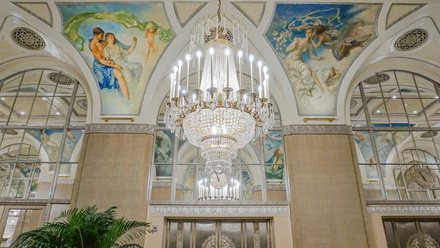Leather artefacts have a special material character and uniqueness. Conservation work on leather, especially when decorated, is a real challenge due to the complex nature of the material, historical craft-led conservation practices and lack of systematic analytical research into degradation processes. Despite its complexity, there isn’t yet a dedicated sector in the conservation field to appropriately care for these unique objects.
This three-day workshop will introduce participants to conservation techniques for leather and skin artefacts, with a focus on suitable and effective remedial treatments. Lectures will cover leather manufacture history, skin nature and identification, materials, and application methods, and examine case studies amassed from years of practical experience. These lectures will be paired with hands-on sessions in which participants will have the chance to experiment with materials and techniques available within leather conservation.
This workshop is open to conservation professionals and other museum professionals
with responsibility for collections comprising historic leather items. By the end of the workshop, participants will have gained a solid understanding of the chemical and physical properties at play during leather treatments and feel comfortable exploring these treatments in their own conservation labs.
Each day will begin with a lecture session, culminating in a group discussion. These sessions will be followed by a series of hands-on exercises, with opportunities for experimentation on a variety of test surfaces. Participants will be encouraged to bring appropriate test objects to supplement those provided by the instructor.
Schedule (this may vary):
Day 1
9:00–9:15: Introduction, housekeeping and goals setting
9:15–10:00: Lecture: understanding leather, origin, and evolution of the manufacturing process
This lecture offers a simplified explanation of the origin, chemistry and structure of skin and leather processes. An excursus on the most representative decorative techniques will also be presented.
10:00–10:30: Tea break
10:30–13:00: Decorative techniques practical session: embossing, engraving, cuir bouilli, gilding, painting, cimatura, openwork
13:00–14:00: Lunch break
14:00–14:45: Lecture: leather degradation processes and remedial treatment options for
conservation
This lecture introduces the main degradation processes and risk factors for skin and leather objects. Conservation techniques will be presented, accompanied by case studies, discussing various challenging treatments and differing ways of approaching them. It will also discuss considerations on the materials we use in the workshop and will segue into the hands-on portion of the day.
14:45–15:30: Conservation techniques practical session: humidification and safe shape recovery
15:00–15:30: Tea break
15:30–16:15: Conservation techniques practical session: consolidation techniques
16:15–16:30: Group considerations and wrap up for the day
Day 2
9:00–9:45: Lecture: leather ID and other scientific analysis to identify the materials and
techniques of leather objects and to determine their conservation state
9:45–10:00: Leather ID practical session
10:00–10:30: Tea break
10:30–13:00: Conservation techniques practical session: repairs and materials preparation
13:00–14:00: Lunch break
14:00–14:45: Lecture: spotlight on preventive measures for skin and leather collections
Topics include preparing hide and skin materials for storage and exhibit, the use of suitable archival materials and which ones might harm skin proteins, and housekeeping techniques.
14:45–15:30: Conservation techniques practical session: repairs, materials and techniques
15:00–15:30: Tea break
15.30–16:15: Conservation techniques practical session: repairs, materials and techniques
16:15–16:30: Group consideration and wrap up for the day
Day 3
9:00–9:15 Project presentation
Participants will work on an original 16th century leather screen. They will be tasked to identify the animal, decorative techniques, and surface finishes, determine the extent of deterioration, and understand the agents that are harming the object.
9:15–9:45: Lecture: documentation and condition report writingA specific leather conservation glossary will be presented to provide participants with useful tools to write up effective condition reports for leather collections.
9:45–10:50: Hands on session: in groups of two, participants will discuss the condition of the
object and prepare a conservation plan
10:15–10:45: Tea break
10:45–13:00: Hands on session: dry cleaning and wet cleaning tests
Spotlight on aqueous cleaning
13:00–14:00: Lunch break
14:00–15:45: Hands on session: consolidation and repairs
15:45–16:15: Tea break and discussion
Group to discuss overall observations and takeaways. Review of goals set at the start.
16:15–16:30: Feedback / CPD / Summing-up session. Home time for everyone!

